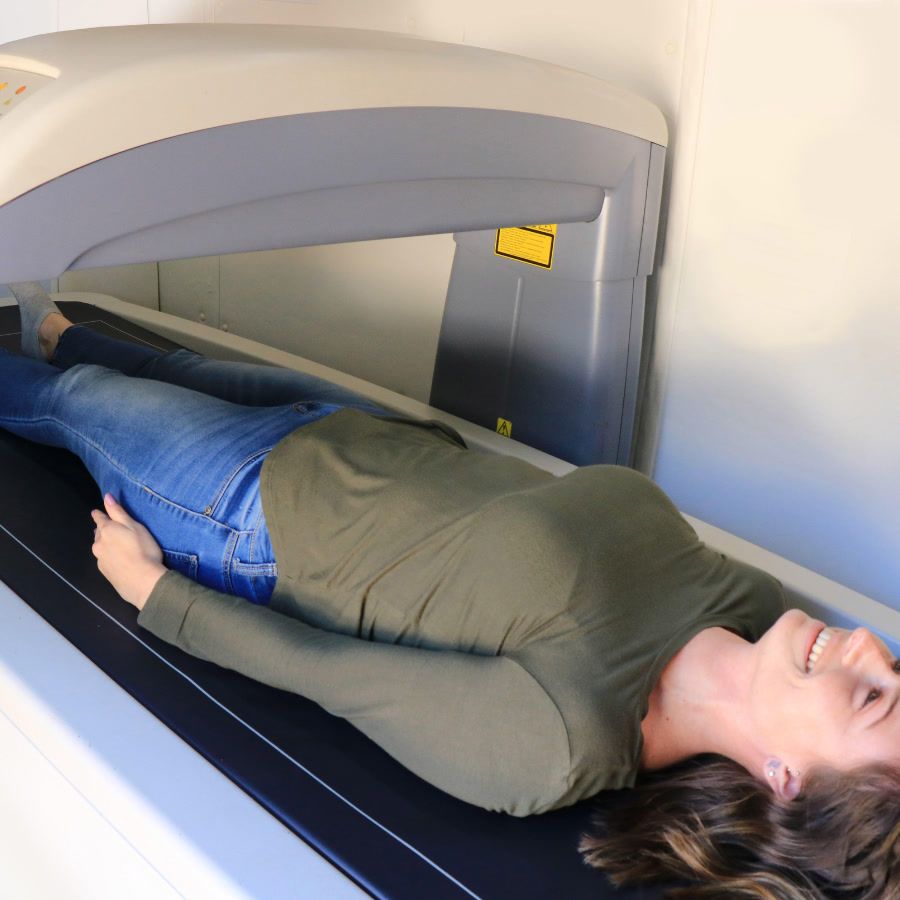The Ultimate Guide to the Murph Workout Challenge

The Ultimate Guide to the Murph Workout Challenge: Training, Scaling, and Honoring a Hero
The Murph Challenge isn't just another grueling workout—it's a sacred ritual performed every Memorial Day, honoring the sacrifice of U.S. Navy SEAL Lieutenant Michael P. Murphy. The workout consists of a 1-mile run, followed by 100 pull-ups, 200 push-ups, and 300 squats, capped off with a second 1-mile run—creating a demanding bookend structure that tests both cardiovascular endurance and muscular stamina.
Whether you're intimidated by the massive volume or you're an experienced athlete chasing a personal record, this workout represents something far greater than fitness.
This comprehensive guide provides:
- A complete 8-week training roadmap for all fitness levels
- Strategic scaling options to make Murph accessible to anyone
- Advanced techniques for experienced athletes seeking elite times
- The knowledge to participate meaningfully in this powerful Memorial Day tradition
What Is the Murph Challenge?
The Murph Challenge is a CrossFit Hero WOD (Workout of the Day) that consists of:
For time:
- 1-mile run
- 100 pull-ups
- 200 push-ups
- 300 air squats
- 1-mile run
Rx'd (prescribed) version: Performed while wearing a 20-pound weighted vest (men) or 14-pound vest (women).
The workout is typically partitioned—meaning you can break the bodyweight movements into smaller, manageable sets. The most popular approach is 20 rounds of:
- 5 pull-ups
- 10 push-ups
- 15 air squats
This Hero WOD was first introduced by CrossFit on August 18, 2005, and has become one of the most iconic and widely performed workouts in the fitness community. What makes Murph special isn't just its physical demands—it's the story behind it.
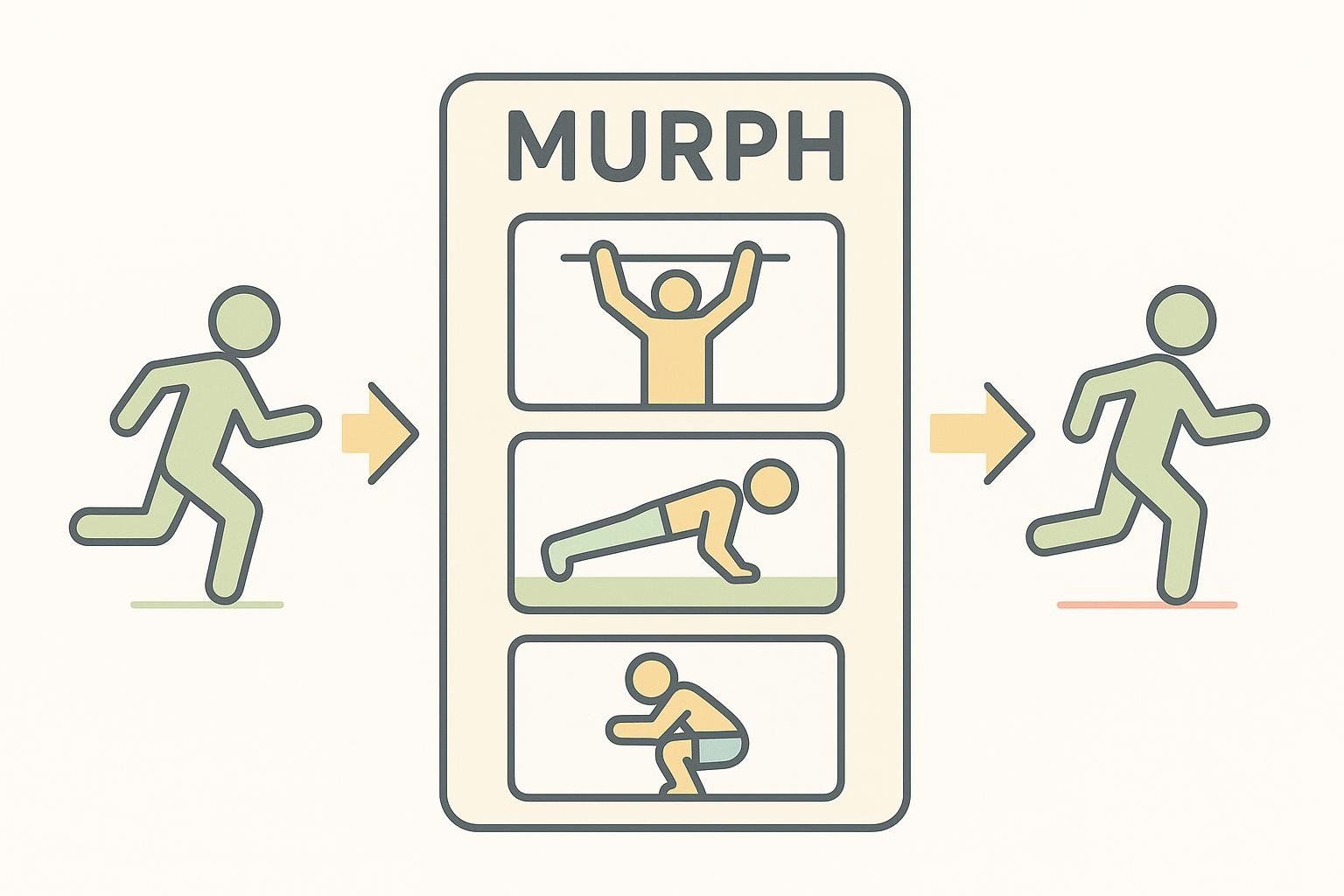
The Story Behind the Workout: Lieutenant Michael P. Murphy
To truly understand the Murph Challenge, you need to know the man it honors. Lieutenant Michael Patrick Murphy was born May 7, 1976, in Smithtown, New York.
Known as "Murph" to friends and family, he grew up on Long Island where he was active in sports and worked as a lifeguard. After graduating with honors from Penn State University with degrees in political science and psychology, Murphy pursued his dream of becoming a U.S. Navy SEAL.
He earned his SEAL Trident in January 2001 and was assigned to SEAL Delivery Vehicle Team 1 in Hawaii.
Operation Red Wings: The Ultimate Sacrifice
On June 28, 2005, during Operation Red Wings in Afghanistan, Lt. Murphy was leading a four-man reconnaissance team tasked with locating anti-coalition militia commander Ahmad Shah. The team consisted of Murphy, Petty Officer 2nd Class Danny Dietz, Petty Officer 2nd Class Matthew Axelson, and Petty Officer 2nd Class Marcus Luttrell.
When local goat herders discovered the team, their position was compromised, and they were ambushed by an estimated 40 enemy fighters in a fierce gun battle.
Despite being severely wounded, Lt. Murphy moved to an open position—knowingly exposing himself to enemy fire—to transmit a call for help and relay his unit's location to request immediate support.
His heroic call led to a rescue operation involving an MH-47 Chinook helicopter carrying 16 additional personnel.
Tragically, the helicopter was shot down by a rocket-propelled grenade, killing all 16 aboard. During the prolonged battle, Murphy, Dietz, and Axelson were killed.
Marcus Luttrell, severely injured, managed to evade the enemy and was eventually rescued.
The operation resulted in the largest loss of life for Naval Special Warfare since World War II. Lt. Murphy was posthumously awarded the Medal of Honor on October 22, 2007, becoming the first service member to fight in Afghanistan to receive this honor.
Why This Matters for Your Workout

The Murph workout was Lt. Murphy's favorite, and he often performed it while deployed. When you tackle this challenge, you're participating in something deeper than fitness:
- Honoring sacrifice: Pay tribute to a hero who gave everything for his team
- Building mental strength: Understanding that any discomfort you feel pales in comparison to what Murphy and his teammates endured
- Connecting to purpose: Approaching the workout with respect, determination, and gratitude rather than just chasing a time
Breaking Down the Murph: Movement Analysis
The Runs (2 miles total)
The mile runs at the beginning and end of the workout serve different purposes. The first mile acts as an extended warm-up while the final mile tests your mental fortitude when you're already fatigued.
Pacing Strategy:
- First mile: Aim for 30-60 seconds slower than your typical mile time
- Final mile: Focus on maintaining steady breathing and form rather than speed
- For beginners: Consider run/walk intervals if needed
The Pull-Ups (100 reps)

Pull-ups are typically the limiting factor for most athletes in Murph. They require significant upper body and grip strength, and fatigue accumulates quickly.
Common Issues:
- Grip failure before muscles fatigue
- Shoulders becoming overtaxed
- Poor pacing leading to early failure
Solutions:
- Use a grip strategy: alternate between overhand and underhand grips
- Break into small sets early (even if you can do 15+ consecutive pull-ups)
- Consider using gymnastic grips or gloves
The Push-Ups (200 reps)

While 200 push-ups sounds manageable, performing them after pull-ups and before squats creates unique challenges. Understanding your personal push-up capacity and proper pacing becomes critical as fatigue sets in.
Key Points:
- Maintain strict form throughout—chest to floor, full lockout
- Break them up more than you think you need to
- Focus on quality over speed
The Air Squats (300 reps)
Air squats are typically the "easiest" movement in Murph, but 300 reps will test your muscular endurance and mental toughness.
Focus Areas:
- Maintain full range of motion—hip crease below knee cap
- Keep your core engaged to prevent lower back fatigue
- Use controlled breathing to maintain rhythm
The Ultimate 8-Week Murph Training Program
Aim to complete two key workouts plus one active recovery session per week on non-consecutive days (e.g., Monday, Wednesday, Friday) with rest days in between.
Foundation Phase (Weeks 1-2)
Goal: Build base fitness and establish movement patterns.
| Week | Day | Workout |
|---|---|---|
| Week 1 | Day 1 | 400m run → 4 rounds: 5 pull-ups, 10 push-ups, 15 air squats → 400m run |
| Day 2 (Active Recovery) | 15-minute easy run or walk | |
| Day 3 | 600m run → 6 rounds: 5 pull-ups, 10 push-ups, 15 air squats → 600m run | |
| Week 2 | Day 1 | 600m run → 8 rounds: 5 pull-ups, 10 push-ups, 15 air squats → 600m run |
| Day 2 (Active Recovery) | 20-minute easy run or walk | |
| Day 3 | 800m run → 10 rounds: 5 pull-ups, 10 push-ups, 15 air squats → 800m run |
Building Phase (Weeks 3-4)
Goal: Increase volume and introduce longer running segments.
| Week | Day | Workout |
|---|---|---|
| Week 3 | Day 1 | 800m run → 12 rounds: 5 pull-ups, 10 push-ups, 15 air squats → 800m run |
| Day 2 (Active Recovery) | 25-minute steady run | |
| Day 3 | 1000m run → 14 rounds: 5 pull-ups, 10 push-ups, 15 air squats → 1000m run | |
| Week 4 | Day 1 | 1000m run → 16 rounds: 5 pull-ups, 10 push-ups, 15 air squats → 1000m run |
| Day 2 (Active Recovery) | 30-minute steady run | |
| Day 3 | 1200m run → 18 rounds: 5 pull-ups, 10 push-ups, 15 air squats → 1200m run |
Strength Phase (Weeks 5-6)
Goal: Build capacity for high volume while practicing advanced partitioning strategies. Note that in Week 6, volume decreases to allow for recovery while intensity is maintained by introducing the weighted vest.
| Week | Day | Workout |
|---|---|---|
| Week 5 | Day 1 | Three-Quarter Murph: 1-mile run → 75 pull-ups, 150 push-ups, 225 squats (partitioned) → 1-mile run |
| Day 2 (Active Recovery) | 25-minute easy run | |
| Day 3 | 800m run → 15 rounds: 5 pull-ups, 10 push-ups, 15 air squats → 800m run | |
| Week 6 | Day 1 | Half Murph with vest (optional): 800m run → 50 pull-ups, 100 push-ups, 150 squats → 800m run |
| Day 2 (Active Recovery) | 20-minute easy run | |
| Day 3 | 600m run → 10 rounds: 5 pull-ups, 10 push-ups, 15 air squats → 600m run |
Peak Phase (Weeks 7-8)
Goal: Taper and prepare for goal Murph.
| Week | Day | Workout |
|---|---|---|
| Week 7 | Day 1 | Full Murph rehearsal at 85-90% effort (practice nutrition, pacing, logistics) |
| Day 2 (Active Recovery) | Light recovery: 15-20 minute easy walk, mobility work | |
| Day 3 | Rest or gentle yoga (10-15 minutes) | |
| Week 8 | Days 1-2 (Active Recovery) | Light activity: 10-15 minute walk, dynamic stretching |
| Day 3 | Complete rest - focus on nutrition and mental preparation | |
| Memorial Day | Goal Murph |
Scaling Strategies: Making Murph Accessible for Every Fitness Level
One of the most important aspects of the Murph Challenge is that anyone can participate by scaling the workout appropriately. The goal is to maintain the spirit and stimulus of the workout while adapting it to your current capabilities.
Beginner Scaling (New to exercise or limited pull-up ability)
Beginner Murph:
- 800m run (or 10-minute walk)
- 10 rounds of:
- 5 ring rows or jumping pull-ups
- 10 knee push-ups or incline push-ups
- 15 air squats
- 800m run (or 10-minute walk)
Focus: Complete all rounds with good form, aiming for a 45-60 minute time cap. Prioritize quality over speed.
Intermediate Scaling (Some fitness base, working on pull-ups)
Two-Thirds Murph:
- 1-mile run
- 14 rounds of:
- 5 pull-ups (assisted or banded as needed)
- 10 push-ups
- 15 air squats
- 1-mile run
Focus: Maintain consistent pace and good form throughout the workout
Quarter and Half Murph Options
Quarter Murph:
- 400m run
- 25 pull-ups, 50 push-ups, 75 squats
- 400m run
Half Murph:
- 800m run
- 50 pull-ups, 100 push-ups, 150 squats
- 800m run
Advanced Scaling (Building toward Rx'd)
Full Volume, No Vest:
- Complete the full Murph workout without the weighted vest
- Focus on pacing and movement efficiency
- Goal: Complete in 45-55 minutes
Partner Murph
Working with a partner makes Murph accessible while maintaining the challenge:
- Both partners run together
- Split the bodyweight movements evenly (50/100/150 each)
- Alternate movements or work simultaneously
Strategic Partitioning: How to Break Up the Reps
The most effective partitioning strategies balance sustainable pace with movement efficiency. Here are proven approaches:
The Classic: 20 Rounds of 5-10-15
This is the most popular partitioning scheme:
- 5 pull-ups
- 10 push-ups
- 15 air squats
- Repeat 20 times
Pros:
- Even pacing
- Manageable chunks
- Easy to track
- Equivalent to 20 rounds of the CrossFit workout "Cindy"
Cons:
- Can become monotonous
- May not optimize individual strengths
The Strength-Based Approach
Customize partitioning to your limiting factor:
If pull-ups are your weakness:
- 50 rounds: 2-4-6
If push-ups are your weakness:
- 25 rounds: 4-8-12
If you're well-rounded:
- 10 rounds: 10-20-30
The "Smart Sets" Strategy
Break push-ups into two smaller sets for better muscle recovery:
- 5 pull-ups
- 5 push-ups
- 15 air squats
- 5 push-ups
- Repeat 20 times
Time-Based Partitioning
Set a timer and work for specific intervals:
- Every 2 minutes: Complete one round of 5-10-15
- Focus on consistent pacing rather than speed
- Allows built-in rest periods
Advanced Strategies for Elite Times
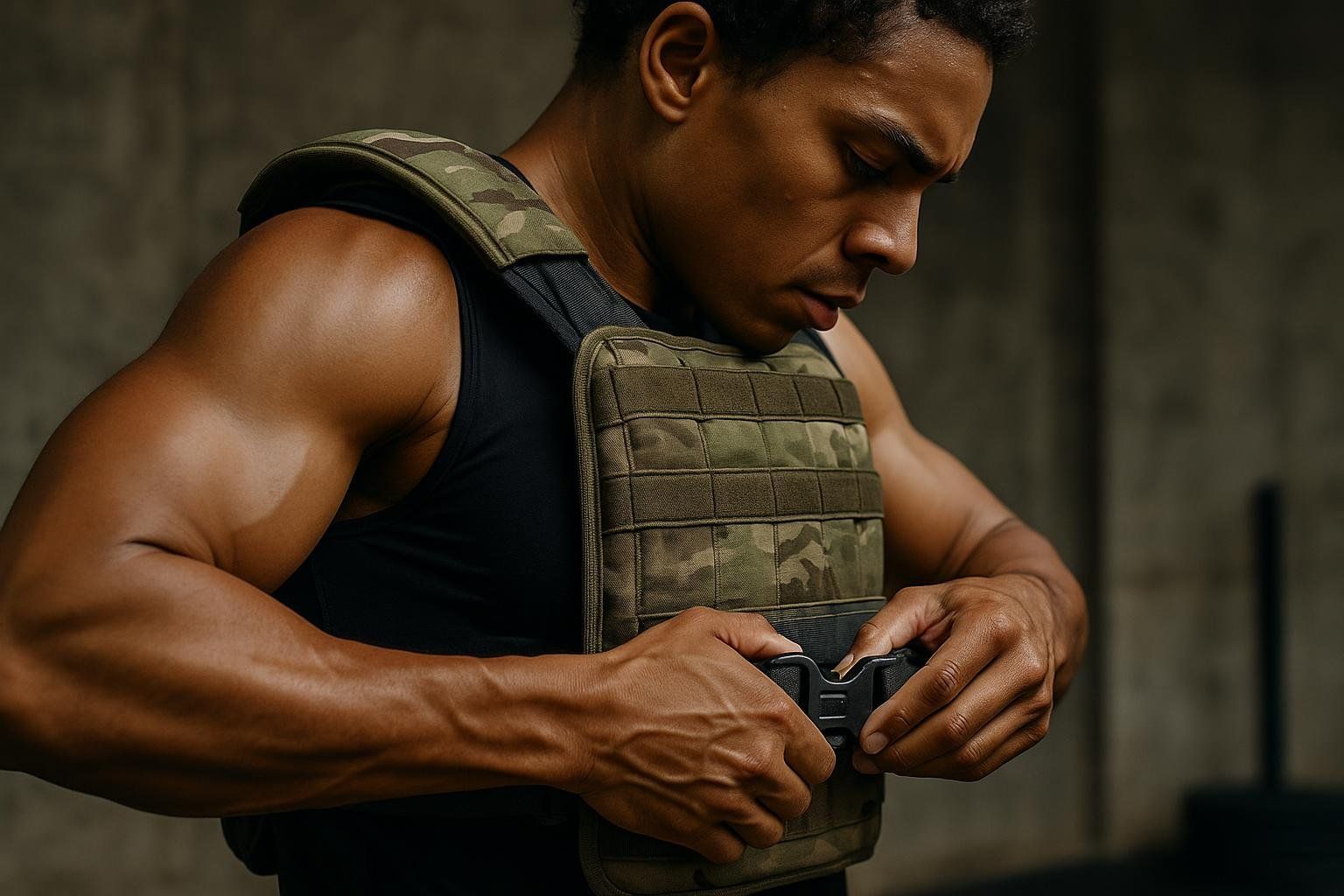
For experienced athletes targeting sub-40 minute times, advanced strategies become crucial:
Pacing Guidelines for Sub-40 Murph
- First mile: 7:30-8:00
- Bodyweight section: 20-22 minutes
- Final mile: 8:00-9:00
Elite Partitioning Strategies
The Unpartitioned Approach:
- Complete all 100 pull-ups, then all 200 push-ups, then all 300 squats
- Requires exceptional strength endurance at the highest competitive level
WARNING: This approach is reserved for only the most elite athletes (such as CrossFit Games-level competitors). This strategy carries significant risk of muscle failure and injury for the vast majority of participants, including grip failure, shoulder impingement, and complete muscular breakdown.
The Big Sets Method:
- 10 rounds of: 10-20-30
- Larger sets reduce transition time
- Requires strong conditioning base
Advanced Training Considerations
Weighted Vest Progression:
- Train with the vest for 6-8 weeks before your goal Murph
- Start with shorter workouts wearing the vest
- Practice transitions and movement with added weight
Grip Training:
- Farmer's carries with heavy weights
- Dead hangs for time
- Incorporate tools like fat grips, hand grippers, or plate pinches into your accessory work twice weekly
High-Volume Training:
- One high-volume session weekly
- Practice breaking up large rep schemes
- Train your mind for sustained effort
Murph Nutrition and Recovery Strategies
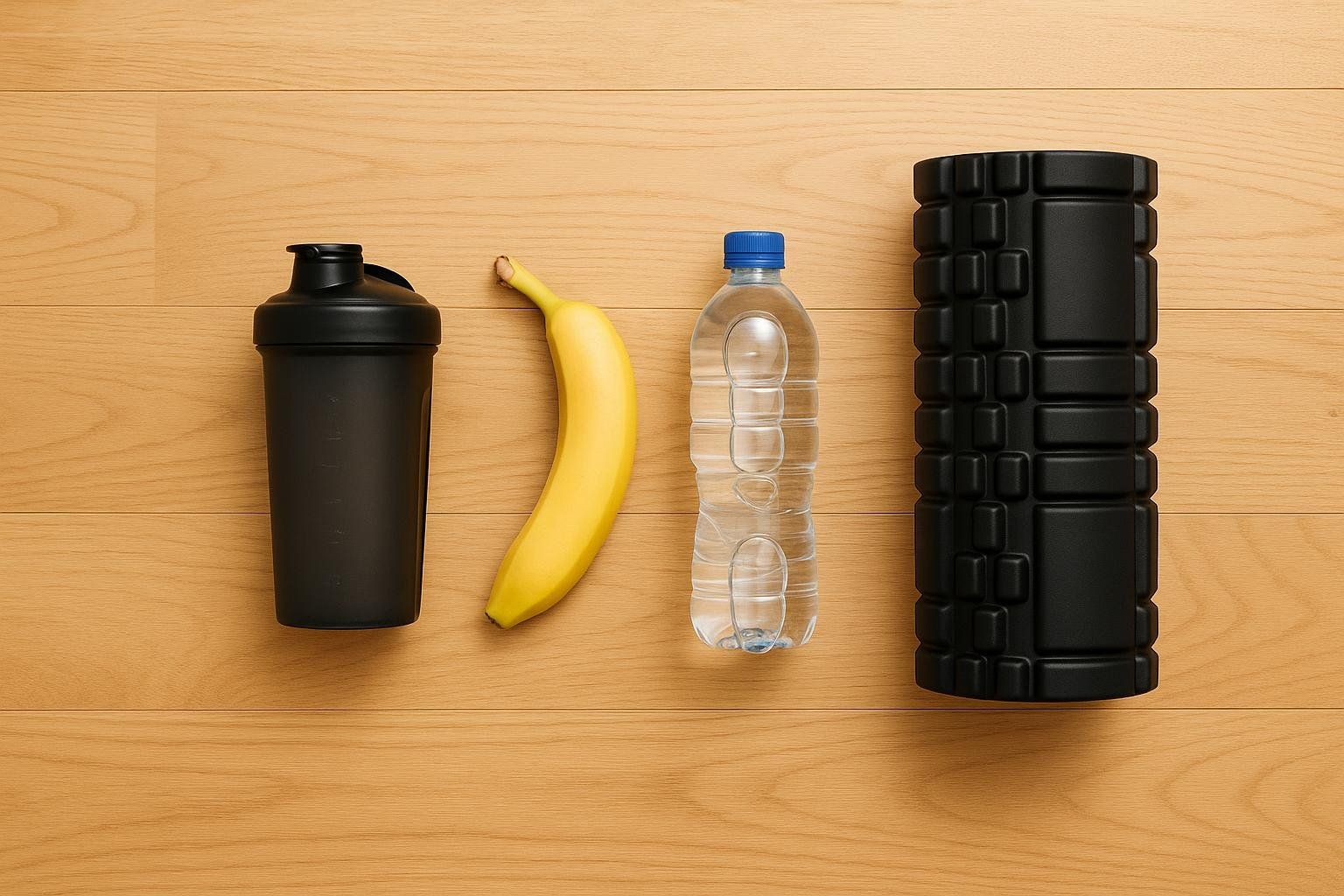
Pre-Workout Nutrition (2-3 hours before)
Sample Meal:
- 1 cup oatmeal with banana and 1 tbsp almond butter
- Coffee (if you normally consume caffeine)
- 16-20 oz water
30-60 minutes before:
- 1 banana or handful of dates
- 8-12 oz water
During the Workout
For most people, Murph takes 45-60 minutes, making mid-workout nutrition unnecessary. However:
- Small sips of water between movements if available
- Avoid overhydrating, which can cause cramping
Post-Workout Recovery
Immediately after (0-30 minutes):
- 16-24 oz water
- Simple carbohydrates: banana, sports drink, or chocolate milk
- Begin gentle walking/stretching
Within 2 hours:
- Substantial meal with protein and carbohydrates
- Examples: protein shake with fruit, chicken and rice, eggs with toast
Recovery Protocols
Day of Murph:
- Gentle walking (10-20 minutes)
- Light stretching or yoga
- Adequate hydration
- Quality sleep (aim for 8-9 hours)
Days 2-3 after:
- Continue light movement (walking, swimming, easy bike ride)
- Focus on mobility and stretching
- Avoid intense training
Mental Strategies for Murph
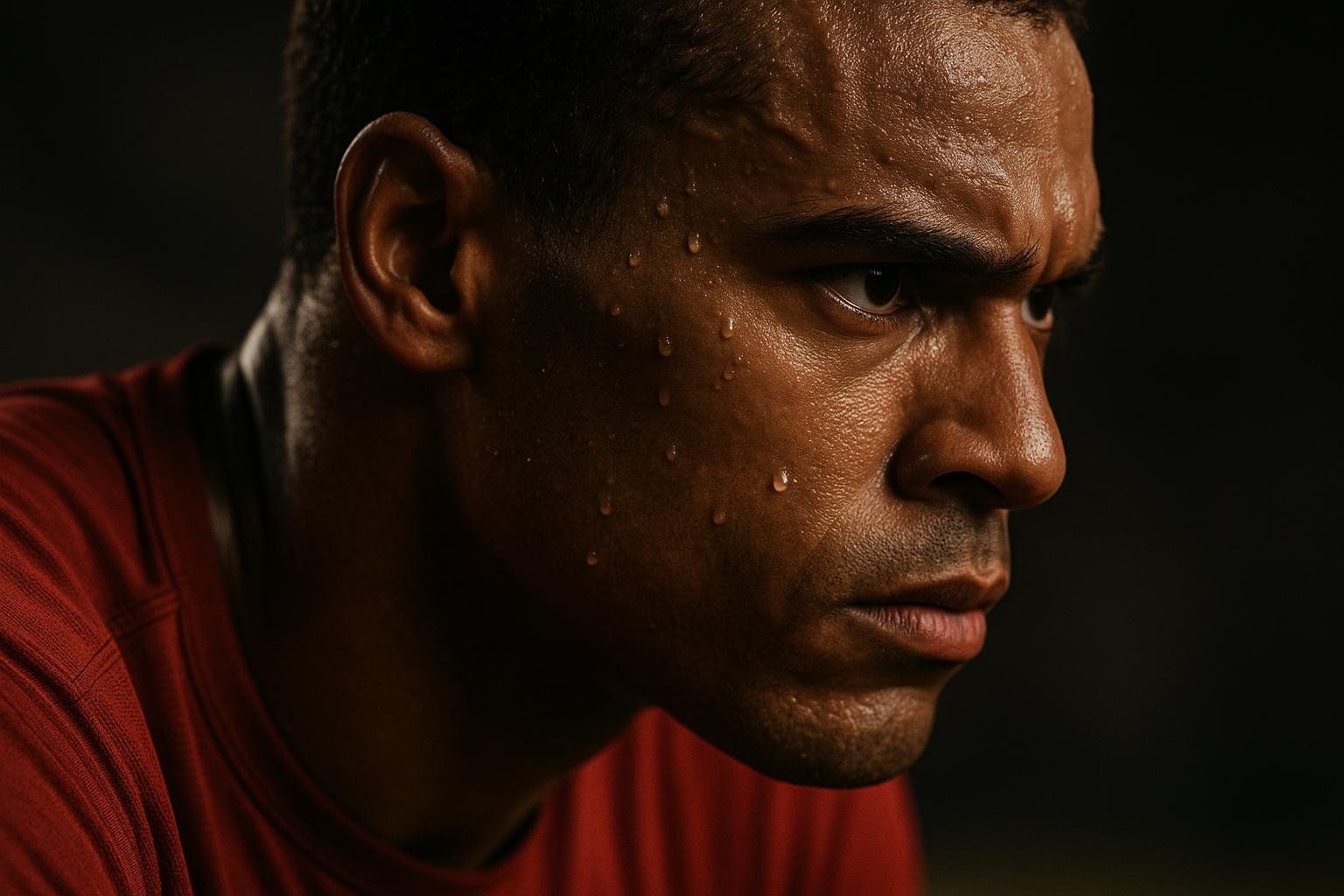
The Murph Challenge is as much mental as physical. Here's how to prepare your mind:
Visualization Techniques
Pre-workout visualization:
- Walk through each segment of the workout
- Visualize how you'll feel at different points
- Practice positive self-talk for difficult moments
During workout mantras:
- "One rep at a time"
- "Honor Murphy's sacrifice"
- "I am stronger than I think"
- "Embrace the suck"
Breaking Down Mental Barriers
The 1/3 Rule:
- First third: Should feel relatively comfortable
- Second third: Discomfort builds, but manageable
- Final third: Mental toughness takes over
Chunking Strategy:
- Don't think about the entire workout
- Focus only on the current set or movement
- Celebrate small milestones (every 5 rounds, etc.)
Drawing Motivation from Murphy's Story
When the workout becomes difficult, remember:
- Murphy faced far greater adversity
- Your discomfort is temporary
- You're honoring something greater than yourself
- Every rep represents remembrance and respect
Common Murph Mistakes and How to Avoid Them
Mistake #1: Going Out Too Fast
The Problem: Starting with large sets of pull-ups or running the first mile too fast
The Solution:
- Start with smaller sets than you think you need
- Run the first mile 30-60 seconds slower than your normal pace
- Use the first 5 rounds to establish your rhythm
Mistake #2: Neglecting Grip Preparation
The Problem: Grip failure before muscles fatigue, ruining your pacing
The Solution:
- Train grip strength specifically in your preparation
- Use gymnastic grips, gloves, or chalk
- Practice pull-up grip variations (overhand, underhand, neutral)
Mistake #3: Poor Push-Up Pacing
The Problem: Push-ups become the limiter when they should provide a chance to focus on pacing
The Solution:
- Break push-ups into smaller sets early
- Maintain strict form to avoid inefficient compensation
- Consider the "smart sets" approach with split push-ups
Mistake #4: Inadequate Preparation
The Problem: Attempting Murph without proper training progression
The Solution:
- Follow a structured 8-week training program
- Practice partitioning strategies during training
- Complete at least one full or half Murph before your goal attempt
Mistake #5: Forgetting the "Why"
The Problem: Focusing purely on time and performance rather than remembrance
The Solution:
- Learn about Lt. Murphy's story and sacrifice
- Take moments during the workout to reflect on the meaning
- Participate in the official Murph Challenge to support the memorial foundation
The Official Murph Challenge and How to Participate
The Official Murph Challenge is an annual fundraiser supporting the LT Michael P. Murphy Memorial Scholarship Foundation. The foundation provides scholarships to students and has raised over $2 million while supporting educational opportunities across the country.
How to Register
Registration typically opens April 1st each year
- Visit the official Murph Challenge website
- Register for the worldwide leaderboard
- Make a donation to the memorial foundation (optional but encouraged)
- Receive official Murph Challenge swag
Leaderboard Categories
- Male and Female divisions
- Age group categories
- Rx'd (with vest) and scaled divisions
- Team and individual options
Virtual and In-Person Events
Virtual Participation:
- Complete Murph typically during Memorial Day weekend
- Submit your time and photo for verification
- Join thousands of participants worldwide
In-Person Events:
- Many CrossFit gyms and military installations host official events
- Creates community atmosphere and camaraderie
- Often includes ceremony honoring fallen service members
Murph Variations and Additional Hero WODs
Other Memorial Day Workouts
While Murph is the most popular Memorial Day workout, other Hero WODs honor fallen service members:
"DT" (in honor of SSgt Timothy P. Davis):
- 5 rounds for time:
- 12 deadlifts (155/105 lbs)
- 9 hang power cleans
- 6 push jerks
"Danny" (in honor of SGT Daniel Sanchez):
- 20-minute AMRAP:
- 30 box jumps (24/20 inches)
- 20 push-ups
- 30 walking lunges
- 20 mountain climbers
Additional Murph Options
Double Murph:
- Complete two full Murph workouts in one day
- Ultimate endurance and mental challenge
- Only for very advanced athletes
Measuring Your Progress: Beyond Time
While completion time is the most obvious metric, other indicators show progress:
Performance Metrics
Movement Quality:
- Maintaining form throughout the workout
- Consistent rep patterns without breakdown
- Smooth transitions between movements
Pacing Consistency:
- Even splits between rounds
- Avoiding dramatic slowdowns in later rounds
- Maintaining breathing control
Recovery Metrics:
- How you feel 24-48 hours after
- Return to normal training schedule
- Reduced muscle soreness compared to previous attempts
Tracking Body Composition and Performance
The combination of high-volume strength and cardio in Murph training aligns with well-established principles of body recomposition. Research shows that programs combining aerobic and resistance exercise can be effective for managing body composition—exactly what happens when you train for Murph.
Training Effects:
- Improved muscle endurance, especially in push/pull patterns
- Cardiovascular adaptations from sustained effort
- Enhanced work capacity for high-volume training
DEXA scans provide precise measurement of how your training affects muscle mass, fat distribution, and bone density.
Key Benefits of DEXA Tracking:
- Monitor muscle gains from high-volume bodyweight training
- Track fat loss from sustained cardiovascular effort
- Assess regional muscle development (arms vs. legs vs. core)
- Validate that your training is producing desired body composition changes
Training Log Metrics
Weekly tracking should include:
- Weekly training volume (sets × reps for each movement)
- Long run improvements
- Max sets of consecutive movements
- Recovery time between training sessions
Injuries, Modifications, and Safety
Common Murph Injuries
Shoulder Impingement:
- Caused by high-volume overhead movements
- Prevented by proper warm-up and gradual volume progression
- Modified with ring rows or inverted rows
Lower Back Strain:
- Often from maintaining push-up position with fatigue
- Prevented by core strength training and form maintenance
- Modified with incline push-ups or knee push-ups
Knee Issues:
- Can result from high-impact running when fatigued
- Prevented by proper running form and appropriate footwear
- Modified with low-impact alternatives (rowing, bike)
Safety Guidelines
Pre-participation Screening:
- Consult healthcare provider if new to exercise
- Address any existing injuries before training begins
- Consider movement screening to identify limitations
Training Progression:
- Increase volume gradually (10% rule)
- Master movement patterns before adding intensity
- Include adequate recovery between sessions
During Murph:
- Stop if you experience sharp pain (different from muscle fatigue)
- Modify movements if form breaks down significantly
- Stay hydrated but don't overhydrate
Adaptive Modifications
For Limited Mobility:
- Seated or supported versions of movements
- Upper body focus if lower body limitations exist
- Partner assistance for movement transitions
For Injury Recovery:
- Work with physical therapist to modify appropriately
- Focus on unaffected movement patterns
- Use Murph training as part of return-to-activity progression
Conclusion: More Than a Workout
The Murph Challenge represents everything meaningful about fitness: honoring others, testing personal limits, and using physical challenge as a vehicle for remembrance and respect. Whether you complete it in 35 minutes or need an hour with modifications, your participation connects you to a community united by respect for Lt. Michael P. Murphy and all who have made the ultimate sacrifice.
As you lace up your shoes for your first or fiftieth Murph, remember that every step, every rep, and every moment of discomfort serves a purpose greater than personal fitness. You're not just working out—you're participating in a moving memorial that ensures heroes like Lt. Murphy are never forgotten.
Start with the 8-week training program in this guide, scale appropriately for your current fitness level, and consider registering for the Official Murph Challenge to support the memorial foundation.
If you want to track your body composition changes from Murph training and see how this demanding workout transforms your physique, schedule a DEXA scan with BodySpec to measure your muscle gains, fat loss, and overall health improvements with scientific precision.
Whatever your time, whatever your modifications, your participation honors the memory of a true American hero.


